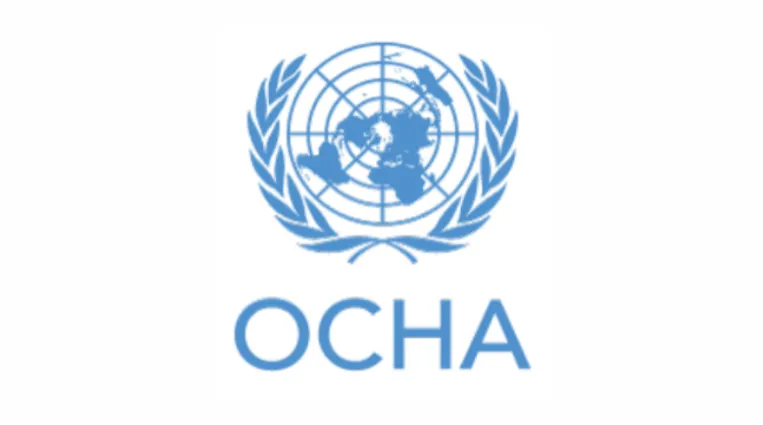Myanmar: Escalation of clashes in northern Shan and the Northwest Flash Update #3 (As of 9 November 2023)
09 November 2023

Highlights
- Intense fighting, including artillery shelling and airstrikes, has continued in several townships in northern Shan since the attack by an alliance of Ethnic Armed Organizations (EAOs) and others against military and police bases on 26 October 2023, causing additional civilian casualties and displacement.
- As of 9 November, almost 50,000 people in northern Shan were forced into displacement in religious compounds with relatives. Many have also moved towards the border with China and others are still trying to cross.
- Key routes into Lashio township remain blocked both by the Myanmar Armed Forces (MAF) and by EAOs, and all travel routes to northern Shan remain restricted.
- Phone and internet services have been disrupted outside Lashio township and the main airport in Lashio remains closed hindering people’s movement, humanitarian access and communications with people in need.
- Fighting has also escalated in the Northwest in early November. About 40,000 people have been subsequently displaced due to active fighting in the Northwest.
- In northern Shan, faith-based organizations, community-based organizations (CBOs) and civil society organizations (CSOs), in collaboration with humanitarian partners, continue to provide basic essential humanitarian assistance.
- US$1 million from the Myanmar Humanitarian Fund will be disbursed to support those responding to emerging needs in northern Shan. This support is, however, insufficient to meet the surge in needs.
- A halt in clashes and unimpeded access by all parties are critical to ensuring the delivery of timely, life-saving services to people in need.
Situation Overview
Intense fighting has continued between the MAF and various EAOs, as well as People’s Defense Forces (PDFs) across multiple townships in northern Shan since 26 October, leading to additional civilian casualties and surging displacement. Fighting escalated following a series of attacks on MAF and police bases by a coalition of EAOs—namely the Myanmar National Democratic Alliance Army (MNDAA), the Ta’ang National Liberation Army (TNLA), and the Arakan Army (AA), calling themselves the ‘Three Brotherhood Alliance.’ Consequently, 17 civilians were reportedly killed and 39 were injured, while at least 200 civilian houses were reportedly damaged in 6 townships. Two weeks on, nearly 50,000 people have reportedly been displaced and are currently sheltering in 100 locations in religious compounds or with relatives across 10 townships in northern Shan. According to media reports, several hundred people reportedly crossed the border into China because of ongoing fighting and many others are still trying to cross, but partners can not verify exact numbers.
Key roads to Lashio town have either been closed or blocked by the EAOs or the MAF causing shortages of essential items and price hikes. Major transport routes have been cut off, including the strategic Lashio-Muse highway, leading to a healthcare access crisis that is already reported to have resulted in several deaths. Phone and internet services have been disrupted outside Lashio township and the main airport in Lashio remains closed hindering people’s movement, humanitarian access and communications with people in need. On November 6, a bomb allegedly planted by an EAO exploded at the privately owned CB Bank in Lashio. This incident severely disrupted the bank’s operations, leading to all commercial banks reducing operations to only three hours a day. Consequently, there is a significant reduction in the availability of cash in the region. The mobile money application ‘KBZ PAY’ is currently offering limited services, and the only other available mobile banking option, ‘WeChat,’ operates exclusively along the Myanmar-China border, not in the main urban areas of Lashio. As a result, prices of basic commodities are on the rise. The increasing price of basic commodities as a result of transport and cash flow challenges will further diminish the purchasing power of cash-based assistance provided by humanitarian partners.
In addition, an escalation in fighting has also been reported since early November across multiple townships in the Northwest. On 3 November, the joint forces of the Kachin Independence Army (KIA), the Arakan Army (AA), the All Burma Students’ Democratic Front (ABSDF), as well as local PDFs launched coordinated attacks against MAF bases and security positions in Homalin, Kale, Kalewa, Kawlin, Kyunhla, Wuntho, and Tamu townships in Sagaing, as well as Gangaw township in Magway. Intense fighting with airstrikes and artillery shelling occurred in Kawlin town, culminating in the joint forces reportedly seizing the town from the MAF on 6 November. According to local media, approximately 50,000 people from Kawlin town initially fled their homes to safer locations due to the heavy fighting during the first week of November. As of 9 November, 40,000 people remain displaced, while about 10,000 people have returned home. Humanitarian partners are closely monitoring the security situation and trying to verify the exact number and locations of the newly displaced people as well as their needs to provide appropriate assistance.
Announcements
21 May 2025
Open letter: Malaysia must lead ASEAN with principle, not hypocrisy, to address the Myanmar crisis

Progressive Voice is a participatory rights-based policy research and advocacy organization rooted in civil society, that maintains strong networks and relationships with grassroots organizations and community-based organizations throughout Myanmar. It acts as a bridge to the international community and international policymakers by amplifying voices from the ground, and advocating for a rights-based policy narrative.